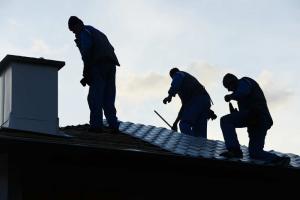Steps to Take After Storm-Related Roof Damage
Missing shingles, scattered roofing material, and fallen tree limbs are often obvious indicators”
SLIDELL, LA, UNITED STATES, June 13, 2025 /EINPresswire.com/ -- Following a severe storm, roof damage is one of the most common and potentially costly outcomes for residential and commercial properties. High winds, heavy rainfall, hail, and falling debris can compromise roofing materials, exposing structures to water infiltration, insulation issues, and structural decay. Prompt action after the storm passes is critical to preventing further complications and minimizing repair costs.— Jules Albert III
According to Jules Albert III, owner of Jaymar Roofing in Slidell, Louisiana, the first step after any storm should be to visually inspect the property from a safe distance. “Missing shingles, scattered roofing material, and fallen tree limbs are often obvious indicators,” said Albert. “However, even subtle damage—like lifted flashing or granule loss—can lead to long-term issues if ignored.”
Homeowners and property managers are advised to document visible damage immediately. Clear photographs of displaced shingles, water stains, sagging sections, or punctures from tree limbs provide valuable evidence for insurance claims and future repair planning. If safe access is not possible, a professional roofing contractor can conduct a more thorough inspection using industry tools and safety equipment.
One of the key risks following roof damage is water intrusion. Even a small opening in the roofing system can allow moisture to seep into the attic or walls, leading to mold growth, compromised insulation, and rotting support structures. In some cases, signs of damage may not appear until long after the storm, particularly in cases involving slow leaks or internal condensation. That is why early detection and action are essential.
Temporary measures—such as placing a tarp over the affected area—can prevent immediate water intrusion until repairs can be completed. Roofing professionals typically use reinforced tarps and anchoring systems to prevent additional wind damage. This step should be taken as soon as possible following the storm and can be coordinated with the roofing contractor or insurance adjuster.
Filing an insurance claim is another critical part of the post-storm process. Insurance companies require documentation of damage, timelines of events, and often an inspection by an approved adjuster. Working with a licensed roofing contractor can streamline the claim process, ensuring that all necessary reports and estimates are professionally documented and submitted.
Not all damage is immediately visible from the ground. In many cases, storm impact weakens roof structures that appear intact. Shingles may loosen without detaching fully. Flashing may bend, causing slow leaks. Gutters can shift, changing water drainage patterns and leading to pooling. A full roof inspection by a licensed contractor is the most reliable way to determine the scope of necessary repairs.
Jules Albert III notes that licensed contractors in Louisiana are familiar with the types of storms that affect the region and the common damage patterns that result. “Local experience matters,” Albert stated. “Wind shear from hurricanes, debris from pine-heavy lots, and prolonged rainfall all require a roofing strategy that addresses both surface repair and structural assessment.”
In addition to emergency repair work, long-term solutions may involve replacing underlayment, installing improved drainage components, or upgrading materials to those rated for higher wind resistance. Many property owners choose to make proactive improvements during repair work to avoid recurring problems in future storms.
Another important consideration is permitting and code compliance. Storm damage repairs may trigger local inspections or require updated permits—especially in flood-prone or hurricane-risk areas. Working with a contractor familiar with local codes ensures that repairs are not only effective but legally compliant. This reduces the risk of fines or complications during property resale.
In Slidell and surrounding areas, storm recovery efforts often involve coordination with multiple service providers—roofers, insurance adjusters, tree removal crews, and restoration companies. Having a clear action plan can reduce confusion and help ensure that each step of the process supports the next.
Key actions following roof damage include:
Documenting visible damage with time-stamped photos.
Avoiding unsafe access to the roof without proper equipment.
Contacting a licensed roofing contractor for inspection.
Filing an insurance claim with detailed evidence.
Implementing temporary protection such as tarping.
Scheduling repairs based on inspection results and code requirements.
Keeping records of all communications, estimates, and receipts.
Roof damage may not always be dramatic or immediately dangerous, but even moderate impact can create long-term vulnerabilities. Moisture intrusion, pest access, and energy inefficiency are all potential consequences of untreated roof issues. In storm-prone regions like Southeast Louisiana, quick response and professional evaluation make the difference between minor repairs and major reconstruction.
Morgan Thomas
Rhino Digital, LLC
+1 504-875-5036
email us here
Visit us on social media:
Facebook
Legal Disclaimer:
EIN Presswire provides this news content "as is" without warranty of any kind. We do not accept any responsibility or liability for the accuracy, content, images, videos, licenses, completeness, legality, or reliability of the information contained in this article. If you have any complaints or copyright issues related to this article, kindly contact the author above.


